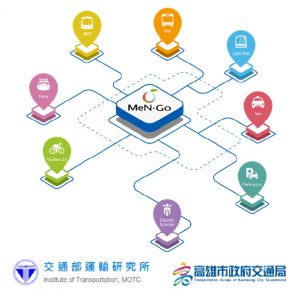
Overview
The 2019-2023 APEC’s Energy Working Group (EWG) Strategic Plan has listed “Support the development and commercialization of energy efficiency technologies in the areas of power generation and distribution, industry, transport, buildings and appliances.” As one of the five objectives in order to promote energy efficiency and low-carbon communities. As the transportation carbon emissions account for a considerable proportion, transportation issues and energy issues are closely linked. Hence, how to apply advance information and communications technology (ICT) to enhance transportation energy utilization efficiency has become an important issue of concern for all APEC members.
The rapid development of ICT in recent years and the prevalence of the concept of sharing economy have given rise to many innovative transportation service business models. Therefore, Helsinki, Finland proposed the MaaS concept in 2014, integrating multi-modes into single MaaS. Through ICT, cloud technology, and personalized mobile device applications, MaaS can be provided targeting the different mobility needs of users.
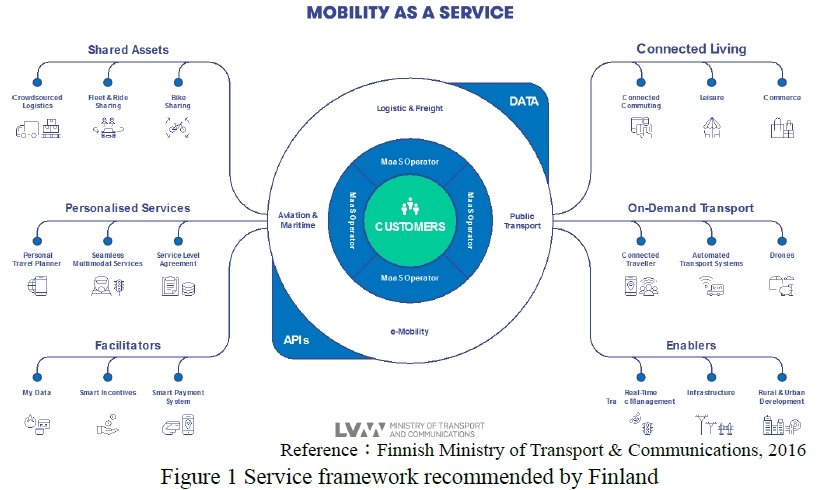
The mobile source of air pollution ratio for the Chinese Taipei Metropolitan Area accounts for up to 30~37%, of which private vehicles and trucks account for 22%. Thus, mature ICT and diverse public transportation infrastructure have been applied in this program to promote the development of MaaS services. It is expected that in the environment with a high mobile source of air pollution can reduce private vehicle usage through high-quality MaaS services, thereby improving carbon emission pollution and achieving the goal of developing low-carbon smart communities.
The MaaS Program combines the competent authority in the application field (Transportation Bureau of Kaohsiung City Government), information and communications service operators, ticketing system operators, service vehicle operators, etc. On September 28, 2018, operations commenced (named MeNuGo). So far, vehicle operators that have participated include: MRT (Mass Rapid Transit), buses, LRT (Light Rail Transit), highway buses, ferries, bike sharing, taxis, shared motorcycles, P&R (Park & Ride) parking lots, etc. High-quality MaaS services have been made available to Kaohsiung residents.
Kaohsiung City is Asia’s first city to have launched the MaaS. It is expected that by continuing to change users’ transportation choice habits through MeNuGo, private vehicle users will be drawn to switch to public transportation, leading to reduce carbon emission from private vehicles and enhancing energy utilization efficiency. In the future, with Kaohsiung area’s MaaS promotion experience as the basis, the MaaS service scope will gradually be extended to encourage more county and city governments to join the MaaS service promotion, thereby achieving the future goal of zero carbon emission in concerted efforts.
MeN Go Introduction Video Link: https://www.youtube.com/watch?v=VKjErcfrMLg

Challenges
This program encountered many difficulties and challenges during the MeN Go service promotion process. Such challenges as high private vehicle usage, poor public transportation service quality, difficulty in integrating transportation operator services, transportation operator information system integration, and so on are explained below:
1. High private vehicle usage: Currently, the private vehicle usage in Kaohsiung City reaches up to 85.5%, while public transportation usage only accounts for nearly 10%. These are indications that most Kaohsiung City residents rely on private vehicles, resulting in urban traffic congestion and serious energy consumption and air pollution. Therefore, how to change the general public’s mode use habits, enhance public transportation system usage, gradually attract private vehicle usage and ownership transfer, and ease traffic congestion to achieve the goals of sustainable transportation, energy conservation, and carbon reduction remain major challenges and issues at present.
2. There is still room for improvement in terms of public transportation service quality: Despite Kaohsiung City’s MRT, LRT, ferries, and buses, the overall public transportation service quality remains undesirable. In addition, there are service gaps among systems, such as time, space, and service seams that exist during the ride shuttle process. As a result of failing to provide convenient and seamless integrated public transportation services, attracting private vehicle user transfer proves ineffective. Hence, peak-hour traffic congestion cannot be effectively improved.
3. Transportation operator service integration: The promotion of MaaS services relies on comprehensive public transportation services. Although Kaohsiung’s metropolitan area possesses more favorable public transportation service conditions and environments, including: buses, MRT, LRT, ferries, vehicle sharing (such as YouBike, GoShare, etc.), taxis, and so on, the systems lack integration. Therefore, how to set a cooperative model to provide the general public with convenient and diverse transportation services will not only lead to public user group expansion, but also will enhance the transportation operators’ willingness to participate.
4. Transportation operator information system integration: In addition to the above-mentioned issues confronted by different transportation operators during the integration process, since the transportation data is mostly in the hands of respective vehicle operators, the promotion of integrated, mobilized, and networked transportation services involves a certain degree of difficulty. Moreover, integration challenges are also encountered in the system aspect.
Objectives
Through the promotion of MeN Go, Kaohsiung city has created new forms of public transportation services, has changed users’ transportation choices, and has enhanced public transportation usage to reduce the mobile source of air pollution. The contents of the relevant objectives are explained below.
1.Promoting the Digital Transformation of Transportation Services
When accessing various transportation services in the past, tickets had to be purchase separately, and the information was dispersed. MeN Go adopts public transportation services and auxiliary transportation system concepts to integrate various means of transport (MRT, city busses, highway buses, LRT, YouBike, ferries, taxis, GoShare, P&R parking lots, etc.) through ICT integration, thereby promoting the digital transformation of transportation services. Users can get discounted prices via their mobile phone APP (or via counter purchase) and with one electronic ticket, thereby conveniently completing travel actions. Additionally, by integrating relevant transportation information and providing travel planning featuring multimode transport, users can instantly grasp the service statuses and times of various transportation services.
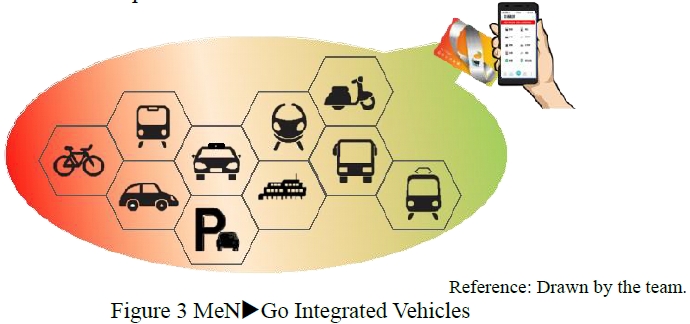
2.Changing Users’ Vehicle Choice Habits
When users go out, they can plan their vehicles through pre-travel planning, provide the travel chain of minimized transport gaps, enhance users’ trust toward public transportation access, and attract users to switch from private vehicles to public transportation. This will enhance public transportation use frequencies, and reduce the carbon emissions of private vehicles.
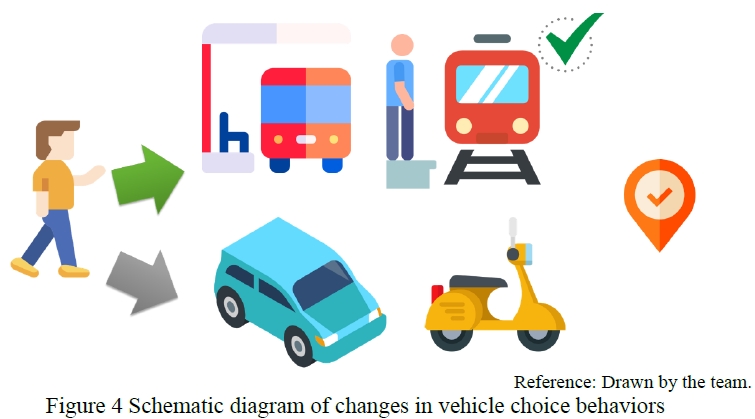
3.Low-carbon Vehicles
MeN Go has established the Mobility Ecosystem as the core concept through the public transportation systems and the auxiliary transportation systems. In addition to MRT, city buses, highway buses, LRT, YouBike, ferries, and other low-carbon public transportation, shared motorcycles has also been imported as the auxiliary vehicle. In addition, the Kaohsiung City Government has also began enhancing the service ratio of electric buses and reducing the frequency of general diesel bus runs in order to strengthen energy conservation and carbon reduction effectiveness. With it as the objective, the Kaohsiung City Government has commenced the inclusion of 95 electric buses to provide services, accounting for 9.4% of the overall bus fleet. In addition, the electric bus service ratio continues to be improved in order to reduce bus carbon emissions and enhance the overall energy conservation and carbon reduction effectiveness.
Strategies
Kaohsiung City occupying an area of approximately 2,951.85km² had a population of 2.77 million people as of 2021. 910,000 passenger cars and 2.02 million motorbikes are owned, and the motorbikes (private vehicles) owning rate accounts for nearly 80%. In the environment of high private vehicle usage, Kaohsiung City still has a diversity of public transportation systems, including buses, MRT, LRT, ferries, shared vehicle (such as YouBike, GoShare, etc.), taxis, and so on.
Buses have a total of 173 service routes. The MRT operating mileage is about 50km, the LRT operating mileage is 8km. Moreover, the 15-km commuting service provided by Taiwan Railway connects the main areas of Kaohsiung to cater to the general public’s commuting needs.
Further, in order to meet the last-mile shuttle service needs, more than 900 city-wide YouBike stations have been set up in the city for public access, thereby creating a living environment of seamless transportation.
Kaohsiung area’s diverse public transportation services have paved an excellent foundation for promoting MaaS. However, with the high vehicle owning and use, how to attract the general public to switch to public transportation services (MaaS) is a major challenge faced during the MaaS promotion process. Under this challenge, this program adopted “locking on target groups and finding pain points and needs”, “establishing the mobility ecosystem of public transportation systems and auxiliary transportation systems”, “providing one-stop transportation services”, “providing multiple transportation passes”, “providing MeN Go bonus point redemption for auxiliary vehicle access”, and other strategies to promote MaaS services, provide high-quality low-carbon green transportation services. The strategic planning and implementation of energy conservation and carbon reduction, smart transportation can in turn be realized.
1.Locking on Targets Groups and Finding Pain Points and Needs
In the early phase of MeN Go promotion in Kaohsiung, electronic tickets and mobile phone signal data were collected to carry out big data analysis and grasp the target group’s moving space and time, as well as the features of vehicles used. According to the concept and practice of thick data, the natures of problems can be contemplated from the people-oriented perspective, with limited samples. Through the holding of many transportation workshops, an insight can be gained into the target group’s daily moving “needs,”, “pain points”, and “expectations”.
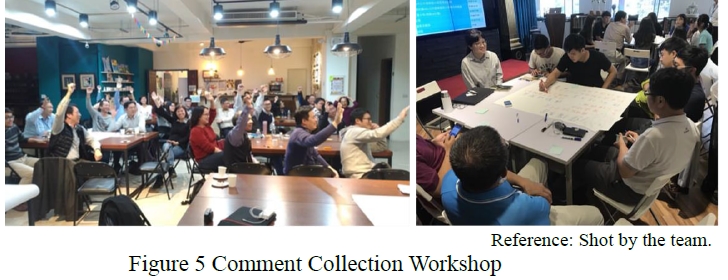
2.Establishing the Mobility Ecosystem of Public Transportation Systems and Auxiliary Transportation Systems
During the promotion process, the resources and momentums of central government and local governments have been integrated to establish the MaaS ecosystem of the “public transportation systems” and the “auxiliary transportation system”. At present, the MRT, buses, LRT, highway buses, ferries, YouBike, taxis, shared motorcycles, P&R parking lots, and many other types of transportation systems in Kaohsiung area have been integrated. A total of more than 30 transportation operators provide the general public with high-quality seamless transportation services and build a comprehensive operational environment for transportation operators.
3.One-stop Transportation Services
MeN Go has integrated multiple means of transport (MRT, city buses, highway buses, LRT, YouBike, ferries, taxis, GoShare, and parking lots) to let users get passes that meet their needs at discounted prices via their mobile phone APP (or via counter purchase) and with one electronic ticket, thereby conveniently completing travel actions.
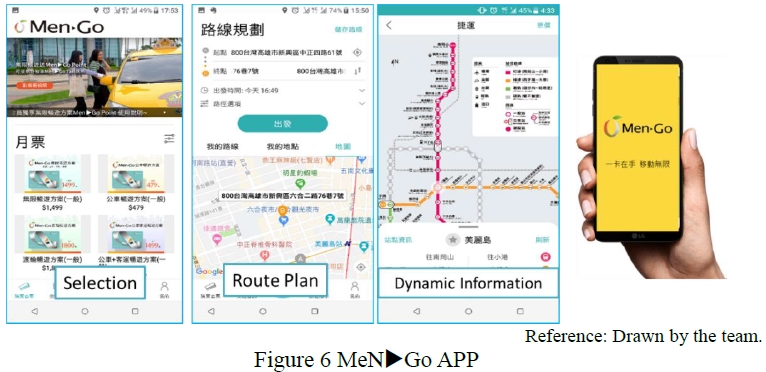
4.Providing A Diversity of Transportation Passes
The main services provided by MeN Go services are 30 days unlimited services for work commuters and school commuters. At present, the most popular 30 Days Unlimited Service among the four service plans are: Bus Unlimited, MRT Unlimited, and LRT Unlimited.
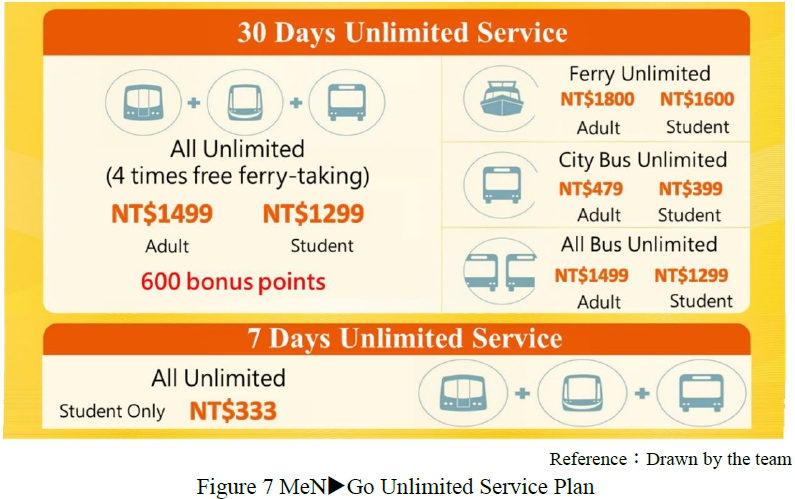
In addition, Kaohsiung City actively developed tourism travel, targeting the needs of tourism travel groups, 24 Hour Pass, 48 Hour Pass, and 72 Hour Pass have been released for users to have unlimited access to designated means of transport within a given time.
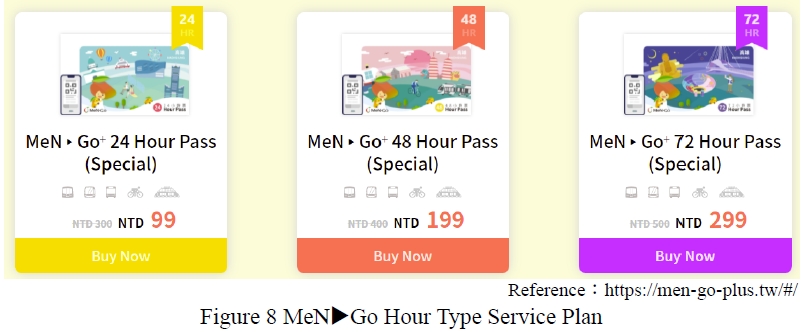
5.Providing MeN Go Bonus Point Redemption for Auxiliary Vehicle Access
Combining the resources and support of the Kaohsiung City and the Directorate General of Highways, MOTC, MeNuGo bonus points are provided targeting the different passes. Redemption for vehicle access (auxiliary vehicle and parking lot bonus point redemption) is available. In addition to optimizing first-mile public transportation and last-mile transportation services and effectively making up for the gaps among public transportation, more people will be drawn to purchase MeNuGo passes.
Measures
The objectives in this program shall be accomplished through the following measures:
1.Advanced Promotion Planning
The Institute of Transportation, MOTC began conducting a feasibility analysis on importing public transportation MaaS in Chinese Taipei. By collecting and analyzing international development strategies and directions, the users’ needs and characteristics were explored. The applicable service models, application scopes, applicable fields, and subsequent promotion strategies of MaaS were formulated. From November 2017 to December 2020, the domestic importation of metropolitan MaaS Demonstration Project in Kaohsiung area, Chinese Taipei was carried out.
2.Conducting Workshops and Discussion Meetings
In the early phase of MeN Go promotion in Kaohsiung, electronic tickets and mobile phone signal data were collected to carry out big data analysis and grasp the target group’s moving space and time, as well as the features of vehicles used. According to the concept and practice of thick data, the natures of problems can be contemplated from the people-oriented perspective, with limited samples. Through the holding of many transportation workshops, an insight can be gained into the target group’s daily moving “needs,”, “pain points”, and “expectations”, which shall serve as a reference for formulating service plans. Additionally, during the service plan formulation process, discussions have been time and again held with relevant public transportation operators, vehicle sharing operators, and other auxiliary vehicle operators from Kaohsiung City in order to grasp their willingness to take part in MeN Go services, difficulties, and expectations.
3.Vehicle and System Integration Method and Experiences
During the promotion process, the Transportation Bureau of Kaohsiung City Government assisted in coordinating and integrating transportation operators and strengthening the transportation operators’ willingness to participate. The Transportation Bureau of Kaohsiung City Government also assisted the Kaohsiung Rapid Transit Corp. in applying for subsidies from the Ministry of Transportation and Communications, setting up MRT system all-station and all-gate with multi-card readers in 38 MRT stations (other than accommodating four passes: iPass, EasyCard, icash, and HappyCash, MeN Go services with iPass as the pass loader are also included), and creating high-quality transportation services including seamless e-ticket rides. In the integration process, the information systems of respective vehicles show disparities. Hence, in terms of vehicle information integration, the Public Transport Data eXchange(PTX) of the Ministry of Transportation and Communications was interfaced to monitor the real-time situation of bus, MRT, bike sharing, and other services. In addition, targeting the respective operators’ system interfacing processes and considering the operators’ varying degrees of informatization, relevant resources were inputted during the implementation process. Assistance was offered to the operators in adjusting their systems, enabling data exchange in the service systems and MeN Go system through interfacing with API.
4.User Comment Survey
After the services went online, a questionnaire survey was administered to gain an insight into user satisfaction and sense of identity toward MeN Go services. The questionnaire survey shows:
(1) 97% of users show a sense of identity toward “the use of MeN Go that can reduce carbon emissions and improve air quality”;
(2) 94% of users show a sense of identity toward “MeN Go can reduce the risk of road accidents”;
(3) 96% of users show a sense of identity toward “MeN Go can improve one’s own traffic safety”.
(4) The reasons that most users choose to use MeN Go include: Save transportation costs, unlimited public transportation access, have a share in energy conservation and carbon reduction, etc.
5.Set up additional YouBike stations and provide ride discounts.
The Kaohsiung City Government has been committed to the promotion of YouBike services. As of August 2021, YouBike service stations have reached 1,000 stations. In addition, in order to encourage the general public to access YouBike, the YouBike renters are granted free access for the first 30 minutes. This measure will encourage them to use YouBike instead of motorbikes as the short-range means of transportation. YouBike is also promoted as the auxiliary vehicle that makes up for the public transportation service gap.
6.Constructing a Low-carbon Vehicle Network
With the global warming and energy shortages in recent years, people around the world have become increasingly concerned about environmental protection and sustainable management. Low-carbon sustainable homes is the goal pursued. Through the promotion of low-pollution and energy-saving smart transport, the goal of achieving energy conservation and carbon reduction can be achieved. MeN Go connects various low-carbon vehicle services, as follows:
(1) Electric ferries: “CHI FU No. 1”, Asia’s first electric ferry designed and manufactured by a local shipyard in Kaohsiung is a low-noise, fuel odor-free, stable, and comfortable vehicle. The hull is environmentally friendly with a light green background and can accommodate 150 passengers.
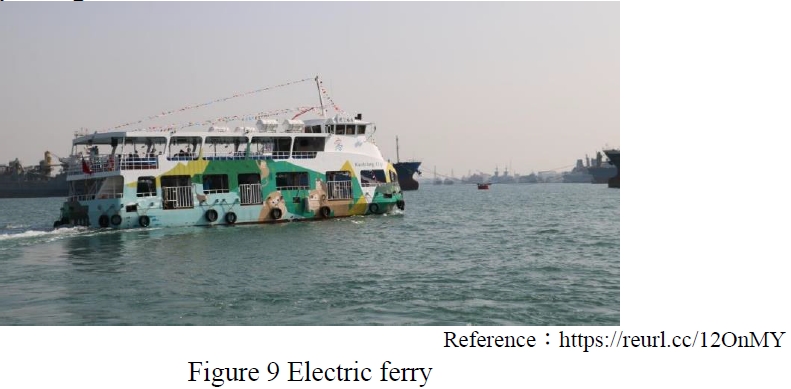
(2) Electric buses: Electric buses use power battery-operated instead of fuel. They are exactly the right green-energy, low-carbon, and environmentally-friendly vehicles. In order to promote green transport, reduce pollution emissions from mobile pollution sources, and reduce pollution emissions from buses, the Kaohsiung City Government has promoted “Green Kao-Ping Electric Bus Project”, thereby creating low-carbon public transportation.
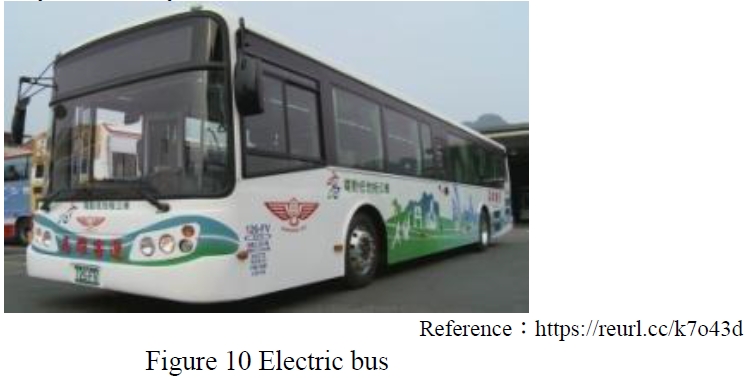
(3) Electric motorbikes sharing: Electric motorbike is a means of transportation featuring both low-carbon emission and convenience. It not only reduces carbon emissions but also reduces dependence on petroleum and demand. Through “renting instead of buying”, the private vehicle holding rate can be reduced to lower environmental pollution and traffic congestion problems in the city. Currently, the GoShare services provided by MeN Go include: WeMo Scooter, UrDa, etc.
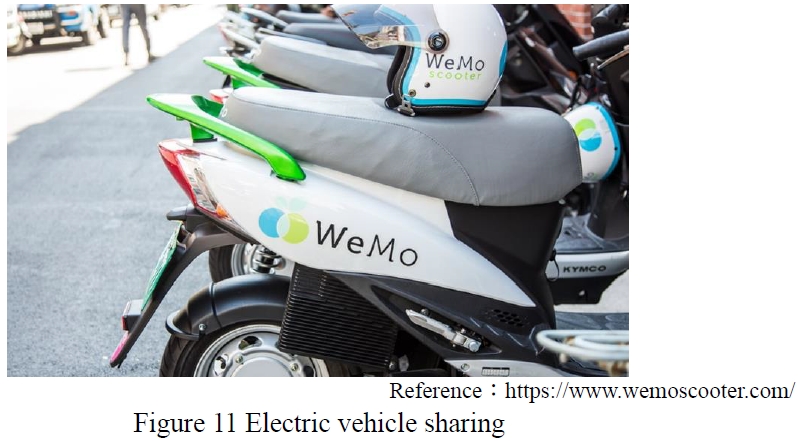
7.Cost Analysis Table
It has taken one and a half years for the MeN Go system to complete the service planning and system setup. During the process, considerable manpower and funds were put in. The cost analysis of the 2018 MeN Go service planning and setup stage is explained below:
• Pass alteration fees: The vehicle e-pass API verification fee is NT$300,000 for each vehicle (5 items: MRT, buses, ferries, LRT, YouBikes); the joint monthly pass card writing system development and various vehicle ticket barrier machine software and hardware alteration fees total NT$5,500,000.
• System development maintenance fees: The MeN Go service Data Provider, Transport Operator, MaaS Provider, and service level system planning setup and testing; database development, APP, and network platform development, system document writing; information security management, system and database maintenance and emergency exclusion, and other items total NT$3,128,000.
• Marketing customer service fees: Propaganda production, advertising exposure, and other marketing activities conduction and customer service handling of Q&A for the general public total NT$3,584,000.
Performance
The MeN Go services in Kaohsiung have thus far changed the vehicle choice behaviors of many users, which have attracted private vehicle users to switch to public transportation. A three-win situation can be achieved among the general public, transportation operators and the government, with energy conservation and carbon reduction efficiency. The relevant outcomes are briefly explained below:
1.Members and Users Continuing to Grow in Number
As of February 10, 2022, the members have exceeded 44,000. A cumulative 210,000 monthly passes have been sold, with over 12 million users.
In the recent two years, the COVID-19 pandemic has caused public transportation usage to drop. The Kaohsiung City Government has launched the “Crash Landing on You” passes at lower prices (see the diagram below for the discounted pass prices) and other discount plus activities to encourage public transportation use. With the good MeN Go services and the preferential measures of government sectors, the MeN Go members maintained certain usage despite the impacts of COVID-19. It was especially so during the discount plus stage when the usage even exceeded the usage without the effects of COVID-19.
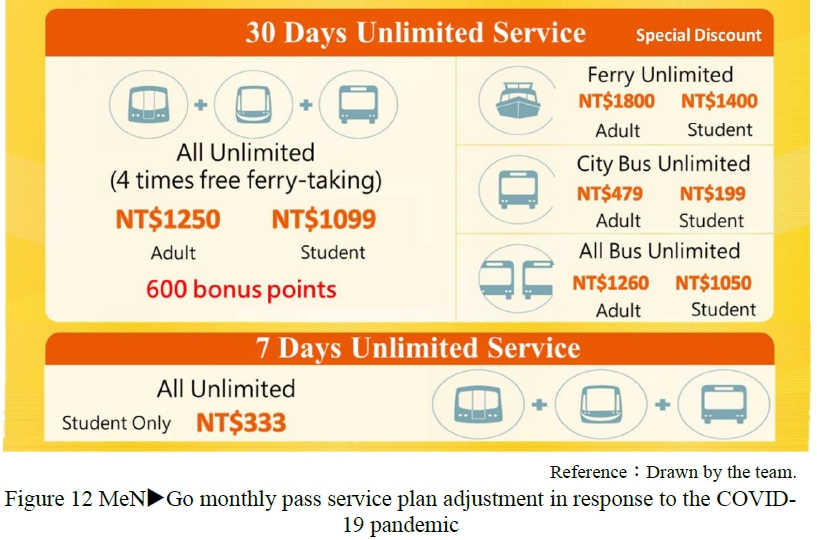
2.Attracting Private Vehicle Users to Switch to Public Transportation
According to the survey analysis results in February 2020, it shows that 31.84% of users have switched from private vehicles. Moreover, a questionnaire survey was administered to gain an insight into user satisfaction and sense of identity toward MeN Go services. The questionnaire survey shows:
(1) 97% of users show a sense of identity toward “the use of MeN Go that can reduce carbon emissions and improve air quality”;
(2) 94% of users show a sense of identity toward “MeN Go can reduce the risk of road accidents”;
(3) 96% of users show a sense of identity toward “MeN Go can improve one’s own traffic safety”.
(4) The reasons that most users choose to use MeN Go include: Save transportation costs, unlimited public transportation access, have a share in energy conservation and carbon reduction, etc.
3.Creating a 3-win Situation Among the General Public, Transportation Operators, and Government
The MeN Go service promotion performance includes: Increase public transportation usage, increase the incomes of operators, reduce public spending on transportation, reduce energy consumption and air pollution, reduced the risk of traffic accidents, etc. The related quantification of the project analysis is as follows:
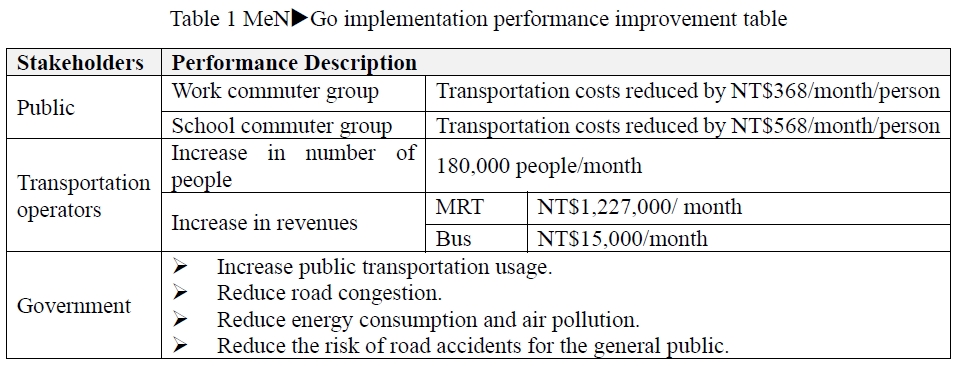
4.Carbon Reduction Efficiency
At present, MeN Go mainly provides monthly passes for the work commuter group and school commuter group, as well as hourly passes for the tourism and travel group. The two types of service passes are explained below in terms of energy conservation and carbon reduction. The related calculation equations involve conversions based on the number of users and differences in carbon emissions between public transport and private vehicles. According to the current IEA Global Energy Report, the average carbon emissions from driving cars account for about 0.11 kg/person/km. According to a report by the Institute of Transportation, MOTC, the average length of travel is 1.94 km for Kaohsiung City. Below is the carbon emission reduction efficiency calculated based on the above data.
• An evaluation of the efficiency of monthly passes in carbon reduction.
The current average monthly pass users are 8,000 people/month, and 2 trips person/day. The daily carbon emission reduction calculation equation is as follows:
0.11*8,000*2*1.94=3,414.4 kg/day
Through this conversion, the year-round carbon emission reduction accounts for 3,414.4*365=1,246,256 kg/year.
• An evaluation of the efficiency hour passes in energy conservation and carbon reduction
Take the lantern festival activities held in Kaohsiung in 2022 for instance (February 15, 2022~February 28, 2022), the Kaohsiung City Government engaged in traffic control through MeN Go hour pass promotion. People will be attracted to access public transportation through the integrated public transportation services and at discounted prices, thereby reducing private vehicle usage. According to the statistics (as of February 16, 2022), the number of purchasers totaled 18,580 people. Assuming each person views “An evaluation of the energy conservation and carbon reduction efficiency” once (by return ticket), the calculation is as follows: 0.11*18,580*2=4,087.6 kg/each time.
It can therefore be found that the general public who accessed the MeN Go services during the period saved at least 4,087.6 kg/each time of carbon emissions. However, the average length of trip of the people at the lantern festival remained unknown. Moreover, the expected number of purchasers continued to grow. Therefore, it can be anticipated that the people at the lantern festival incurred higher carbon emissions than the estimated results.
• Comprehensive efficiency evaluation
Through the promotion of MeN Go, some users gave up on private vehicles. This in turn reduced road congestion and enhanced road service efficiency. The travel time of road users can also be indirectly reduced. By reducing traffic jams and users’ driving and travel time, carbon emissions while private vehicles are moving can be substantively reduced.
5.Underprivileged Groups and Gender Protection
This year, APEC launched the “Aotearoa Plan of Action”. In the plan, five growth promotion tasks have been specially planned, with a focus on sustainability and inclusive growth. At present, MeN Go related public transportation service units have set up related facilities intended for women and persons with disabilities, as cited below:
• Gender equality facilities: Women’s evening waiting area is available at the MRT stations; nursing rooms have also been set up in public transportation stations.
• Inclusive facilities: Priority seats, passes at discounted prices for persons with disabilities.
• Taxi-sharing trial: Taxi-sharing trial services for female students at Kaohsiung Municipal Kaohsiung Girls’ Senior High School (video link: https://www.youtube.com/watch?v=nZJiHBS0jQA).
Through the above service mechanism, in addition to ensuring the safety of female passengers when accessing public transportation, opportunities for fair access to public transportation by persons with disabilities, pregnant women, and other underprivileged group users have also been created.
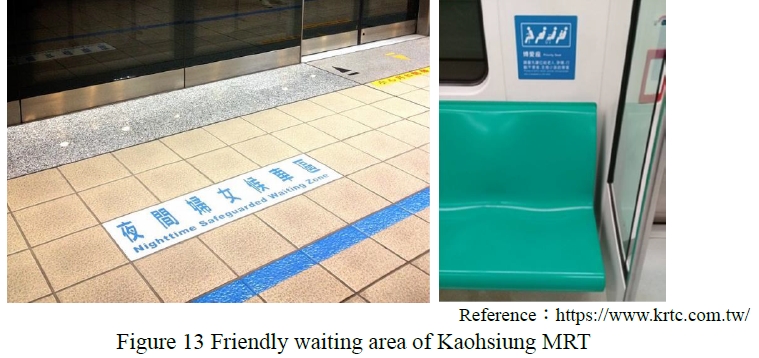
6.International Exchanges
In order to share the MeN Go service promotion experiences, the Institute of Transportation, MOTC has also promoted the services to ITS World Congress and APEC TPT-WG48 where the MeN Go concepts have been explained. It will also participate in the U.S. App-Based Transportation Mobility Technologies for Inclusive Smart Cities Forum and TPT-WG49 to explain the MeN Go implementation results and expand the MeN Go services for sharing and exchanges with other advanced countries.
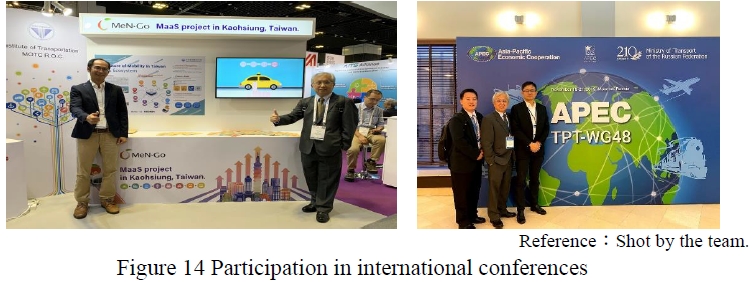
Through the APEC Main Policy Theme Proposal held by Chinese Taipei in 2021, innovative technologies were applied in vehicle integration to contemplate on the effects of MaaS on reducing carbon emissions, climate change, and social justice. After a discussion by the members, it was found that the government units should actively expand MaaS projects and propose incentive mechanisms in order to encourage user access. MaaS will be the key to the general public’s choice of public transportation and more extensive applications of vehicle sharing.
In addition, the Future Mobility Conference on Smart MaaS was held in 2021. Jason Hill from the United States, Chairman of MaaS Alliance, CEO of MaaS Global, and representatives from Odakyu Electric Railway, Japan were invited to share their experiences on MaaS service setups. Through exchanges among the countries, the MaaS service expansion and setup will be accelerated in the future, thereby reducing private vehicle usage in the world. Looking ahead, Chinese Taipei will also continue to engage in mutual exchanges with relevant countries. It is expected that users’ vehicle use habits can be changed through MaaS services, thereby matching the policy and goal of cutting emission to net-zero by 2050 at an accelerated pace.
Conclusion
The MeN Go setup involves gathering the central government (Institute of Transportation, MOTC, Ministry of Transportation and Communications, Directorate General of Highways) and local governments (Transportation Bureau of Kaohsiung City Government, Mass Rapid Transit Bureau, Environmental Protection Bureau), and other cross-departmental resources and public power to create a new form of low-carbon smart transport services. It is the starting point for integrating various transportation systems. The general public is provided with high-quality and seamless low-carbon transportation services. A robust business environment has been established for transportation operators (buses, MRT, LRT, ferries); a low-carbon and sustainable transportation environment has been established for Kaohsiung.
Kaohsiung City is the first MaaS (MeN Go) demonstration field in Chinese Taipei; it is also Asia’s first city to have MaaS services. In the next stage, in addition to extending the MeN Go service scope and optimizing the services, it will be committed to business cooperation with other industries. Cross-industry alliances will give rise to greater business opportunism and more innovative service modes. More people will be drawn to access public transportation, thereby reducing private vehicle use and lowering energy consumption and carbon emissions.
In addition, since Kaohsiung City Government has become the Chinese Taipei MaaS demonstration region, through the technologies and experiences shared in this project, many cities in Chinese Taipei have begun duplicating or referring to the measures and services in this project. Therefore, although this project has been promoted and implemented in Kaohsiung area, the effects of the project results are gradually extending to other urban areas of Chinese Taipei.
MaaS is one of the most popularized innovative technologies in transport sector applications. In the APEC field, MaaS services are promoted. In-depth communication and high-quality cooperation among the members can strengthen transport digital infrastructure, speed up digital transformation, and create an inclusive digital innovation environment for the MaaS industry and responds to the following APEC superordinate strategy document: The economic motivation disclosed in “Aotearoa Plan of Action” (i.e. “Innovation and Digitization”); Item 6 Key Focus Areas, KFA in APEC Internet and Digital Economy Roadmap, AIDER (i.e. Promoting innovation and technology and service applications).
Provided that the APEC region’s members effectively promote MaaS applications, the general public will be drawn to return to the public transportation market and more widely promote vehicle sharing, thereby substantively contributing to carbon emission in APEC region’s transport sector and providing underprivileged groups (such as women, those with low-income, elders, and persons with disabilities) with more inclusive mobility options. In addition, through shared services and public transportation, the mobility needs and freedom of different groups can be met. The following APEC superordinate strategy file can also be effectively responded to: the economic motivation disclosed in “Aotearoa Plan of Action” (i.e. strength, balance, safety, sustainability, and inclusive growth); prioritized actions disclosed in The La Serena Roadmap for Women and Inclusive Growth: “Enhance women’s economic empowerment through data”.
As the APEC sponsorship economy in 2022, Thailand proclaimed Through Thailand’s Bio-Circular-Green Economic Model (BCG Model), APEC related work continues to be promoted. In view of the fact that transportation carbon emission account for a certain proportion, transportation issues and energy issues are bound to be closely related in the future. Therefore, renewable energy technology and energy efficiency exchanges and cooperation among APEC region’s members should be strengthened in order to continue moving towards APEC energy efficiency and renewable energy goals.